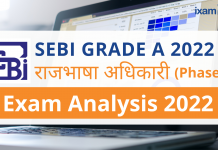What is ISRO?
ISRO or Indian Space Research Organization is the space agency of the Government of India that superseded the erstwhile INCOSPAR (Indian National Committee for Space Research) that was constituted in the tenure of India’s first Prime Minister Late Pt. Jawaharlal Nehru and initiated under the leadership of Dr Vikram Sarabhai also called the father of Indian Space Programme and Dr Ramanathan under the aegis of Department of Atomic Energy. INCOSPAR grew and became ISRO on 15th August 1969 under the aegis of Department of Space (DOS) which is an Indian Government department responsible for the administration of the Indian Space Program. It has its headquarters in Bangalore, Karnataka. Since its inception, ISRO is catering to the needs of India through its fleets of major satellites: the Indian National Satellites (INSAT) for communication services, and the Indian Remote Sensing (IRS) satellites for management of natural resources. Besides this ISRO also functions in the broadcasting, weather forecasting, disaster management, geographic information systems, navigation, cartography (maps), telemedicine, distance education satellites, etc. areas. Also ISRO through its Lunar and interplanetary missions along with other scientific projects encourage and promote science education, apart from providing valuable data to the scientific community which in turn enriches science. Presently Kailasavadivoo Sivan is the chairman of ISRO.
ISRO Vision and Objectives
ISRO not only represent India’s space mission but through its first interplanetary probe, MOM ( Mars Orbiter Mission) popularly known as Mangalyan developed at a low cost of 450 cr and reaching Mars orbit in first go, left a marked impact on the world’s space technology and research. ISRO aims to launch vehicles and satellites of higher class and its space station that fulfils India’s scientific needs. ISRO vision path is to “harness space technology for national development while pursuing space science research & planetary exploration”.
ISRO Centres and Autonomous Bodies
ISRO has its presence in various cities through which it is carrying out various research and launches and thus leading India’s to a path of developed nations. The various test launches, satellite, research centres are –
- Antrix Corporation which is the marketing arm of ISRO, Bengaluru.
- Vikram Sarabhai Space Centre (VSSC)
- Liquid Propulsion Systems Centre (LPSC)
- Satish Dhawan Space Centre (SDSC) SHAR
- U R Rao Satellite Centre (URSC)
- ISRO Propulsion Complex (IPRC)
- Space Applications Centre (SAC)
- National Remote Sensing Centre (NRSC)
- ISRO Telemetry, Tracking and Command Network (ISTRAC)
- ISRO Inertial Systems Unit (IISU)
- Laboratory for Electro-Optics Systems (LEOS)
- Development and Educational Communication Unit (DECU)
- Indian Institute of Remote Sensing (IIRS)
- Master Control Facility (MCF)
Besides this ISRO has some autonomous bodies (such bodies have sole right and power to establish their own laws and code of conduct) are given as below
- Physical Research Laboratory (PRL)
- North Eastern-Space Applications Centre (NE-SAC)
- Semi-Conductor Laboratory (SCL)
- Indian Institute of Space Science and Technology (IIST)
- National Atmospheric Research Laboratory (NARL)
ISRO Milestones
- The first Indian-made satellite RH-75 (Rohini-75) was launched from TERLS in 1967. It was considered a ‘toy rocket’ and weighed just 32 kg.
- ISRO built its first satellite in 1975 named Aryabhatta which was launched by the Soviet Union.
- The first Indian-built launch vehicle was SLV-3 and was used to launch the Rohini satellite in 1980.
- ISRO also launched the first INSAT in 1988 which was a communication satellite.
- ISRO also launched the first IRS or remote-sensing satellite in 1988.
- ISRO has developed three types of launch vehicles (or rockets) – PSLV or Polar Satellite Launch Vehicle, GSLV or Geosynchronous Satellite Launch Vehicle and the Geosynchronous Satellite Launch Vehicle Mark III or GSLV Mark III or LVM.
- ISRO also launched its first lunar mission Chandrayaan I in 2008.
- It launched the Mars Orbiter Mission or the Mangalyaan in 2014 and thus make India the first country to achieve success in putting a satellite on the Mars orbit in its maiden attempt and the fourth space agency in the world and the first Asian agency to do so.
- ISRO created another world record by launching 104 satellites in a single rocket in 2017. It launched its heaviest rocket, the Geosynchronous Satellite Launch Vehicle-Mark III and placed the GSAT 19 in orbit. ISRO plan for a human spaceflight (Gaganyaan), interplanetary probes and a solar mission in near future.
ISRO is truly justifying its motto- “Space technology in the Service of humankind”. ISRO has also carved a niche for itself through its various path breaking space projects and playing an important role in the development and progress of India.
Also Read:
And Many More…
Get Free Online Test Series, GK updates in form of Beepedia, as well as latest updates for Bank PO, Bank Clerk, SSC, RBI, NABARD, and Other Government Jobs.
займ челябинсккеш ю займзайм платиза онлайн заявка















ha ixambe
I m read your article.
your article is helpful and informing
thank-you